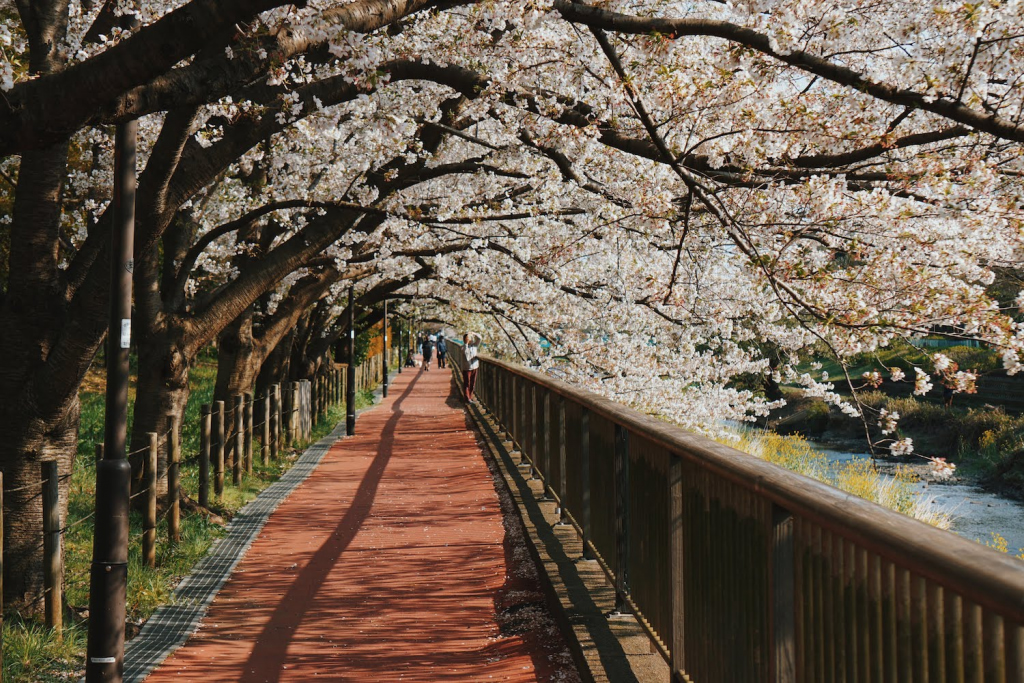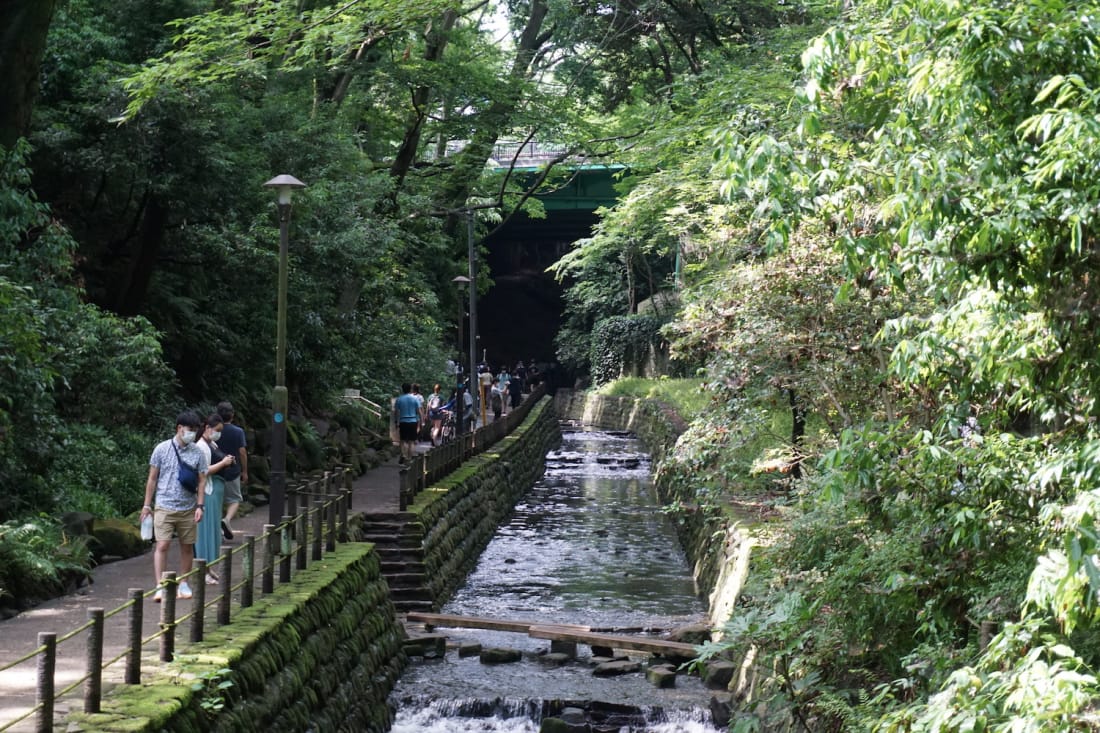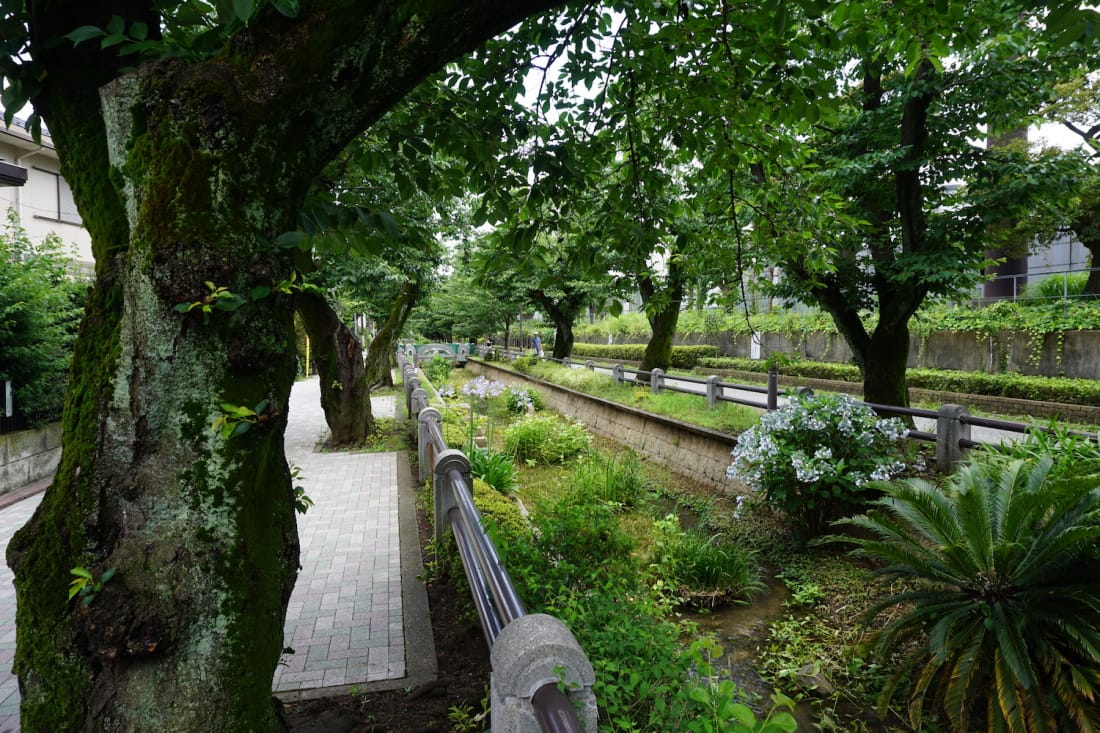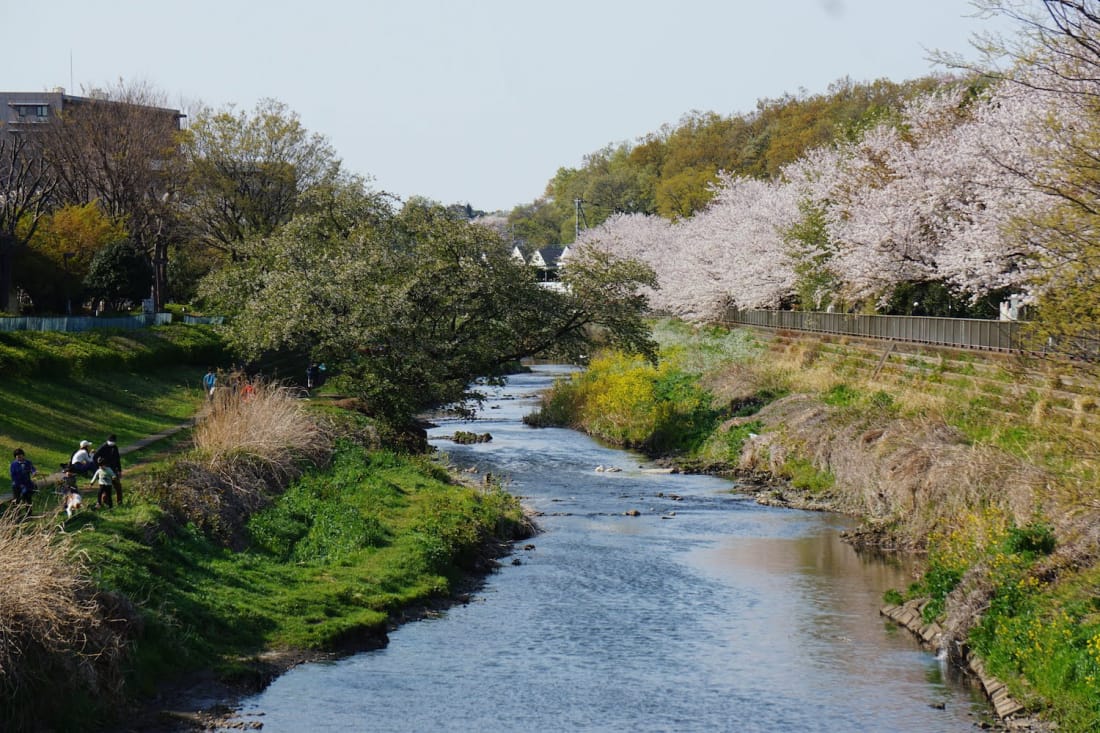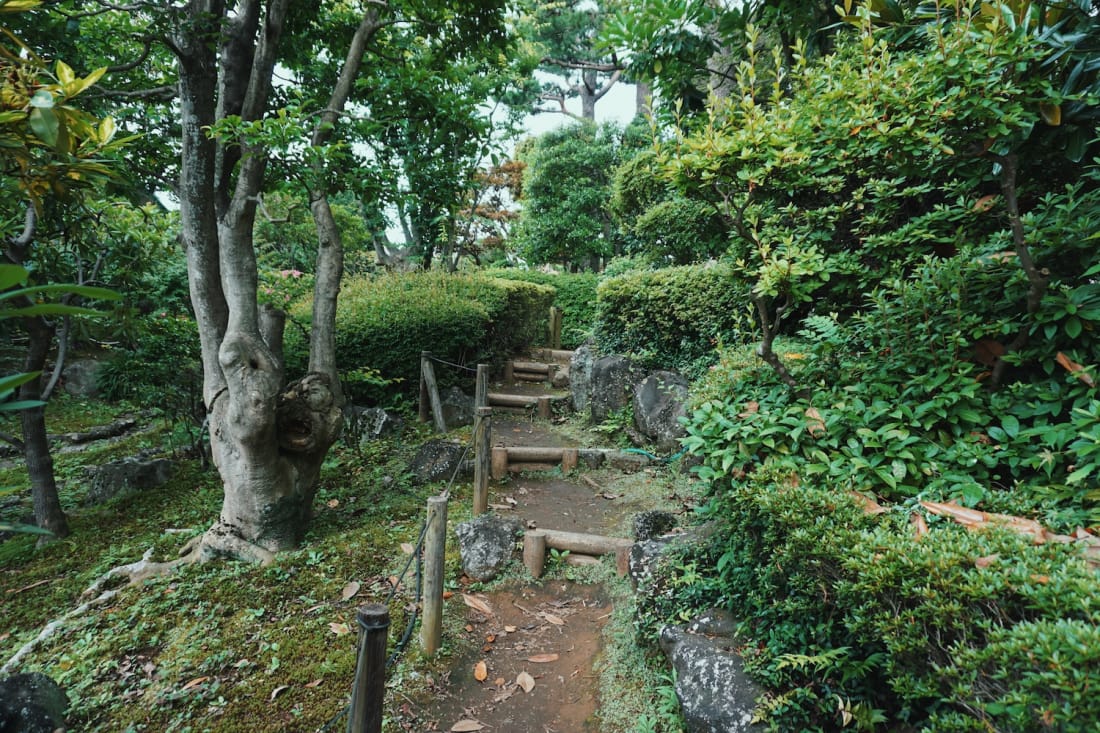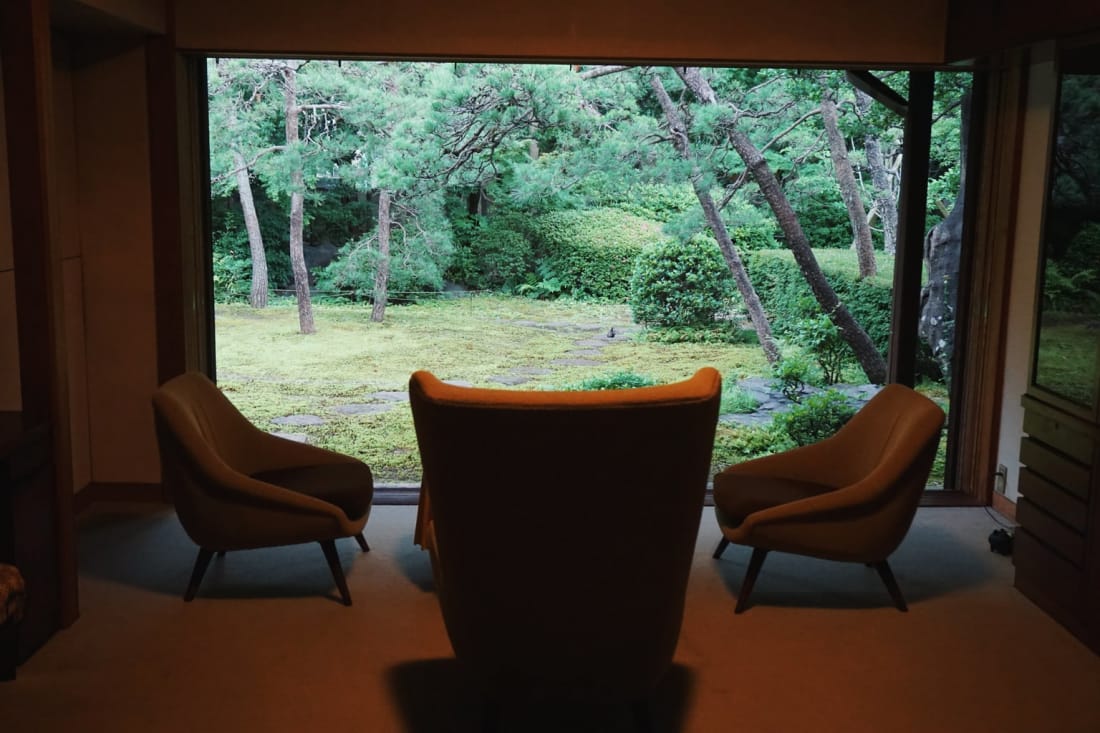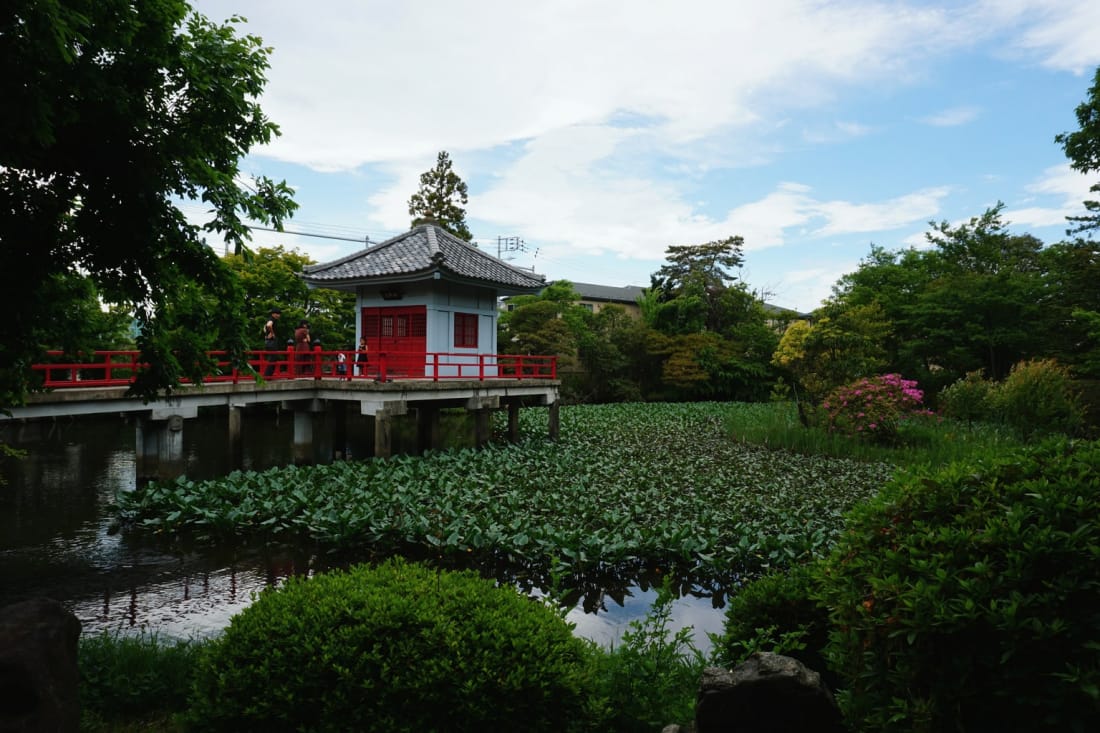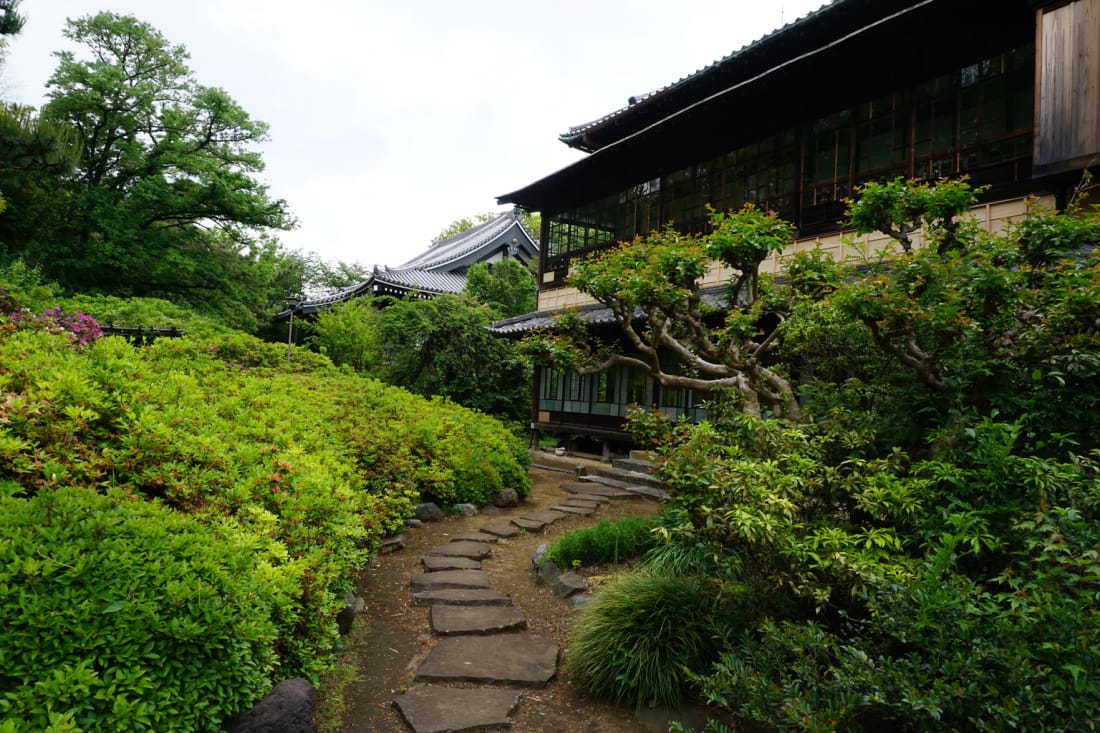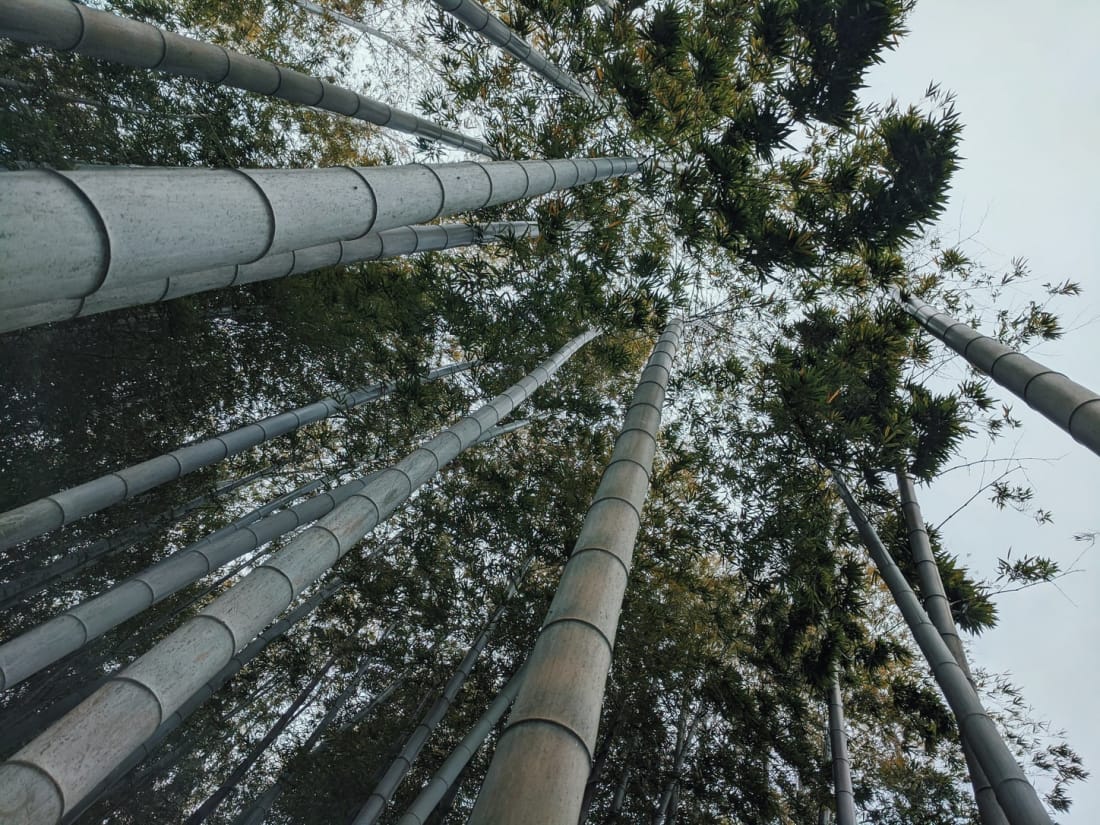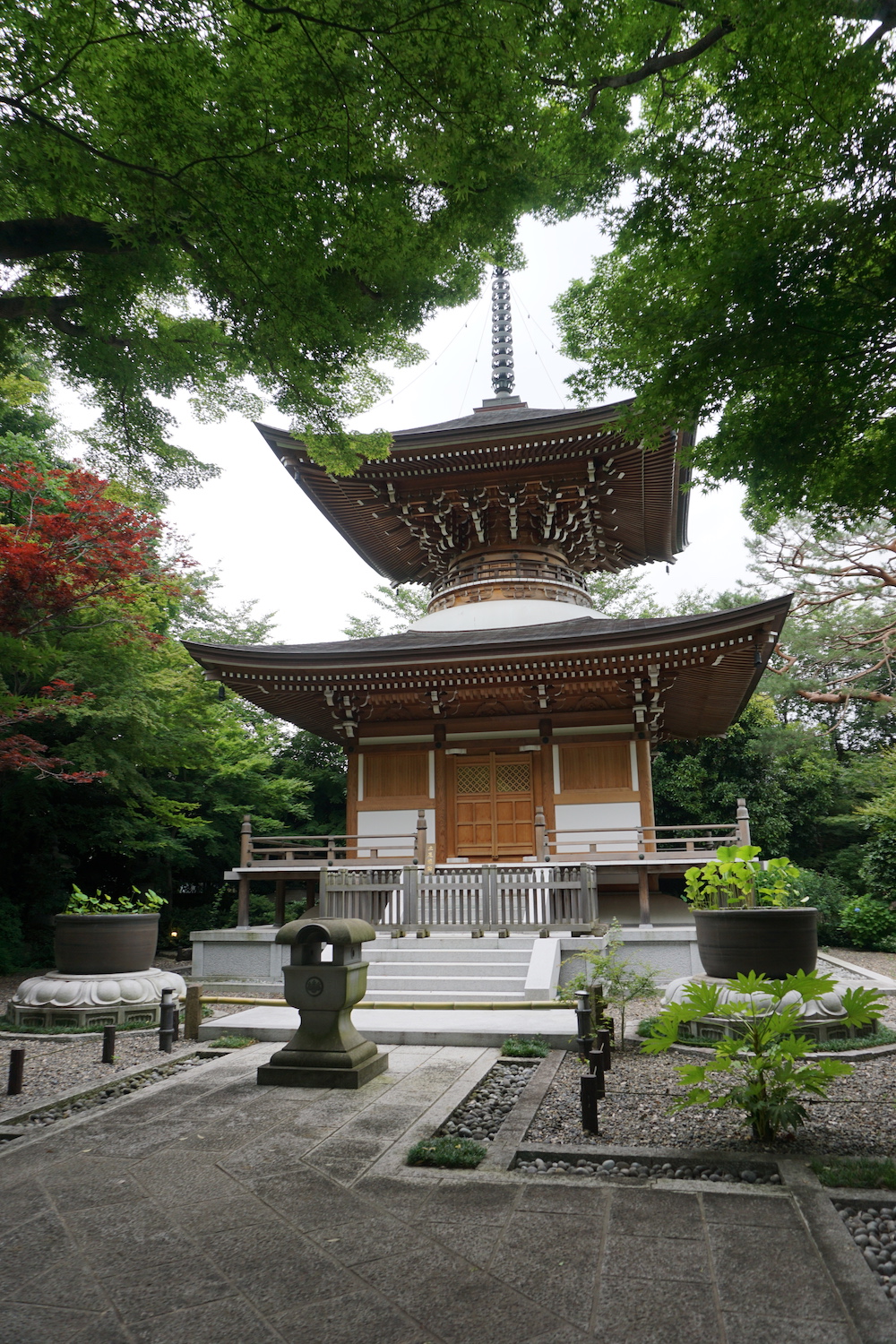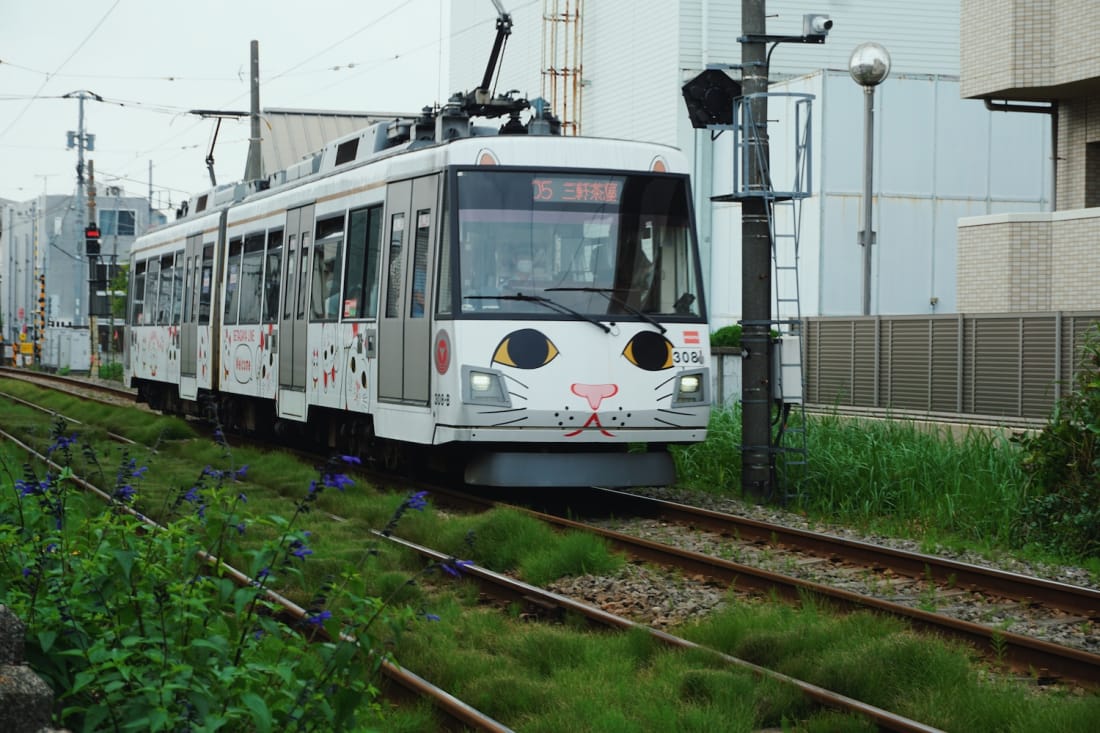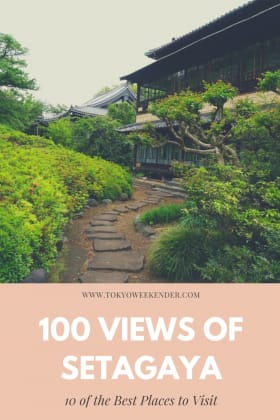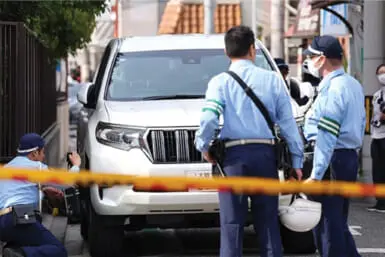Unlike the 100 Soundscapes of Japan, or The 100 Famous Japanese Mountains, visiting each of The 100 Views of Setagaya can be achieved relatively easily. It is a rather eclectic list that was curated by residents who submitted their selections of Setagaya’s “desirable landscapes” to the city office.
From an initial pool of around 200 suggestions, 90,000 people voted to choose the top 100. The list features temples, shrines, parks, streets, gardens and even giant gas tanks. There are also seasonal events like markets, festivals and dances. I have chosen 10 lesser known places that serve as oases from the noise and crowds found in more central areas of Tokyo.
No. 95: Todoroki Valley
Todoroki Valley is the most well-known place on this list. Nestled at the edge of Setagaya near the Tama River, this green oasis is the only gorge in Tokyo’s 23 wards. The gorge is famous for its dense foliage and its cool temperatures; however, this beautiful and immediately impressive sight is also one of the most popular on this list, so be sure to go early in the day to beat the crowds.
Where to find it: ///behind.ambition.left
No. 89: Nomigawa Waterpath and Green Road
Nomigawa Waterpath and Green Road is a path along a brook that covers a lot of ground from near Sakura-Shinmachi Station all the way into Meguro ward. The little waterway is shallow and slow moving so children often play under the sakura trees in the brook catching insects and fish. The whole area is peaceful and reminiscent of a small town. As you continue down the path, you can find a variety of flowers, fountains and places to rest. It is the perfect place for a leisurely walk in any season.
Where to find it: ///adjusted.miss.breathed
No 58: Nogawa and Odakyu Romance Car
Nogawa around the Odakyu Line bridge is the perfect place to spend an afternoon, especially during cherry blossom season. The river is lined with several parks, and the water is clean enough that families often spend the day barefoot in the water catching critters. The Odakyu-line Romance Car that passes over the bridge is an impressive sight to see. It is worth waiting to catch a glimpse of the striking red livery as the train makes its way from Shinjuku to Hakone and back.
Where to find it: ///inherit.spirit.surviving
No. 57: Cliffline around Seijo 3 and 4 Chome
These cliffs cover a wide area that actually extends beyond Setagaya, but the section near Seijo is particularly rich with places to explore. The extravagant dwellings at the top of the cliff make good fodder for daydreaming, but it is the natural areas of the cliffside that are most impressive. While this location is a bit vague, the sense of exploration you get while navigating the small paths and parks that weave their way up and down the cliffside will definitely make you feel like you’ve been transported out of Tokyo.
Where to find it: ///evening.sharper.brave
No. 54: Seijo Hedges
While you are in Seijo visiting the cliffline, it would be a mistake to miss this spot. The hedges are without a doubt impressive, but it is one place within these hedges that makes this sight standout from the other 99 on the list. Open to the public with free admission, the Inomata House and Garden is a must-see. The traditional design exudes a refined extravagance and sitting next to the home’s wide open windows while gazing out into the garden can only be described as tranquil.
Where to find it: ///taxi.match.floating
No. 43: Karasuyama Duck Pond
Upon visiting Karasuyama Duck Pond (Karasuyama Kamoike) I was surprised that I hadn’t seen it featured in any English tourism material for Tokyo. This unknown gem sits just at the edge of Setagaya’s north side near Suginami and Mitaka. The lush pond features a small red shrine in its center that contrasts beautifully against the deep green summer foliage. The pond has many ducks, kingfishers and herons, as well as koi and turtles. Take your time here and enjoy the nature; each season offers its own surprises.
Where to find it: ///lavender.moment.resting
No. 42: Karasuyama Temple Town
Karasuyama Temple Town (Karasuyama Teramachi) is one of the most expansive sights on this list, so make sure to give yourself enough time to explore it all. The 26 temples are located in close proximity to each other making the area another good pick for exploring, and the area has very few pedestrians or traffic so don’t worry about crowds. Visiting each of the 26 temples isn’t essential, but don’t miss Myouji Temple as it has some of the largest temple buildings and residences.
Where to find it: ///bottled.fetch.token
No. 40: Bamboo Thicket in Kasuya
This difficult to find place truly feels like a secret. In fact, it isn’t even labeled on Google maps. A narrow path stuck between a rather gaudy apartment building and a forgettable residential home leads to this hidden grove. At the entrance to the path you will see a small plaque labeling the thicket as one of the 100 sights of Setagaya; follow the path and you will be led around a small square grove of bamboo. On a breezy day it is easy to listen to the sounds of the bamboo and imagine you are somewhere much more remote.
Where to find it: ///crowbar.pancakes.acting
No. 26: Tsurumaki Jissoin
This walled temple ground is located near Kamimachi Station on the Tokyu Setagaya Line. These grounds aren’t particularly large, but the detail put into every aspect makes this place worth visiting. Small statues, fountains and rock formations are hidden by bamboo groves, hedges and carefully shaped trees. A two-tiered pagoda stands in the middle of the grounds; its fresh wood, yet to be weathered by the seasons, gives a modern look to the traditional architecture. Take your time here and look around every corner.
Where to find it: ///encoder.gravy.presses
No. 4: Tokyu Setagaya Line
The Tokyu Setagaya Line is one of two surviving tramways in Tokyo. The line weaves through the residential streets from Shimotakaido to Sangenjaya stations. Compared to the hulking eleven-car trains that cruise around the Yamanote Line, the cute two-car Setagaya Line trams feel quaint and relaxed. The tram frequently passes charmingly small and picturesque crossings. In June the tracks are lined with hydrangeas making the Setagaya Line even more photogenic. In Sangenjaya you can head to the free observatory in the Carrot Tower and get a birds-eye view of this unique line curving through the city.
Where to find it: ///then.flanks.meanings
A complete list of the 100 views of Setagaya is available here (Japanese only), and are plotted on the Google map below.

